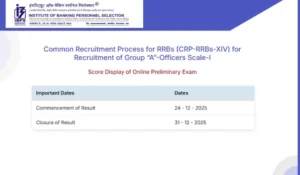Notes on SIMPLE and COMPOUND INTEREST:
The interest can be defined as amount paid by the borrower to the lender in addition to the amount which he had borrowed. In competitive exams, interest is classified into Simple interest (SI) and Compound Interest (CI).
Ex. At what percent pr annum will Rs. 3000 amounts to Rs. 3993 in 3 years, if the interest in compounded annually?
SIMPLE INTEREST:
Simple interest simply means that we have to pay same amount of interest every time. If I have to pay interest on Rs. 500 at ROI of 8%/annum for 3 years, it means I will pay
40×3=RS 120.
Formulae to calculate SI on an amount is
SI=PRT/100
Here, P is the amount borrowed and generally it is referred as Principal.
R is ROI in %. (100 in equation is used to because of %)
And T is time in years.
NOTE: If it is asked in a question, that what is interest obtained at the ROI of 10%(or any value) for 5 years on amount of Rs. Z.
In order to save time first calculate mentally 10×5=50%. Total interest will be 50 % of Principal amount.
COMPOUND INTEREST:
The one liner difference b/w SI and CI is that interest paid for every year is not same. Consider the above example.
At what percent pr annum will Rs. 3000 amounts to Rs. 3993 in 3 years, if the interest in compounded annually?
Here, let rate of interest is r % per annum.
Then,
The formulae for amount obtained after the given time period in CI
Here A is amount obtained after interest, P is principal, n is number of years R is ROI.
CI= A – P.
In competitive exams, this approach is rarely used because it will be too calculative if time is 3 years and ROI is 17%.
Best approach to use in CI is resultant ROI, it makes CI as easy as SI.
Eg. If ROI on Rs.10000 in a scheme is Y%, calculate total interest after two years. Then resultant interest is
Resultant interest % on 17 %= 2×17 + (17×17)/100 = 34+ 2.89= 36.89%.
It is more time savior than traditional method. Little use of mind will help you to solve all kind of problems.
Note that if we can calculate resultant interest % for two years, we can also calculate it for three years. Actually general formula for calculating resultant % for two years, if ROI on first year is X% and second year is Y%, then resultant interest % will be
X+Y+(X×Y)/100
For calculating 3year resultant interest, first calculate resultant interest of first two years and then again use resultant formulae for adding resultant of first two year and ROI of 3rd year.
REMARK: Check 3 years total interest % for ROI 0f 10% whether it comes 33.1%.
DIRECT FORMULAE TO CALCULATE 3 YEARS RESULTANT INTEREST %
3r. 3 r² r³ __
Here, r is ROI
Note that
4 underscores (_ _ _ _) represent 4 digits after decimal. Further, make it clear that _ _ (last two digits are for last two digits of value of r³]
And starting two (_ _) are for value of 3r².
Consider eg.
3r. 3 r² r³_
When r = 2
r³ = 08, r² = 4, 3r² = 12
Resultant interest is for 3 years
6.1208
Now consider r = 8
r³ = 512, r² = 64, 3r² = 192
use last two digits of r³ for last two digits.
i.e. 3r. _ _ 12, and carry on 5 to 3r².
3r² = 192 + 5 = 197.
Here also, use only its last 2 digit and carry on 1.
3r. 9 7 1 2
3r = 24 + 1 → carry on from 197.
Resultant interest % = 25.9712%
Check for r = 10%.
While solving a question, student should always keep in mind resultant interest %.
Q. Amount of Rs 4000 becomes Rs 6600 in SI in 5 years. Calculate ROI.
Solution. Though general formula of SI i.e. SI=PRT/100 is an easy approach,
But try mentally to solve RS 2600 is what % Rs 4000. You can mentally calculate that 2600/4000=13/20 which means 65%.
And 65% in 5 years in SI means 13% year.
Q. Difference b/w interest obtained in SI and CI on an amount at the ROI of 10% is Rs. 310. Find the principal amount.
Solution.
Calculate resultant % for SI and CI for 3 years at ROI of 10%.
Its 30% for SI and 33.1% for CI. But we know that we calculate interest on principal. It means that 3.1% of principal is equal to Rs 310. Hence principal can be calculated.
POINTS TO REMEMBER ALWAYS:
Difference b/w interest obtained on CI and SI for 2 years is (PR)^2/100.
Resultant interest % in CI for 3 years at 10% ROI is 33.1% and 15.7625% at ROI of 5%.





 IBPS RRB PO Mains Shift Timings and Repo...
IBPS RRB PO Mains Shift Timings and Repo...
 RBI Assistant Salary 2026, Check Salary ...
RBI Assistant Salary 2026, Check Salary ...
 IBPS RRB PO Score Card 2025 Out at ibps....
IBPS RRB PO Score Card 2025 Out at ibps....








